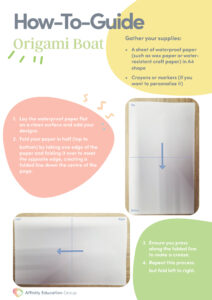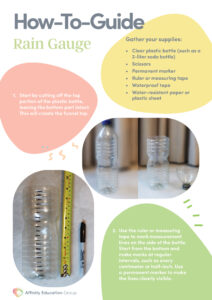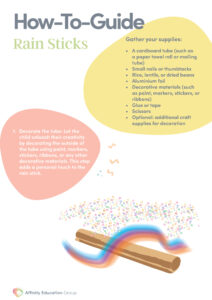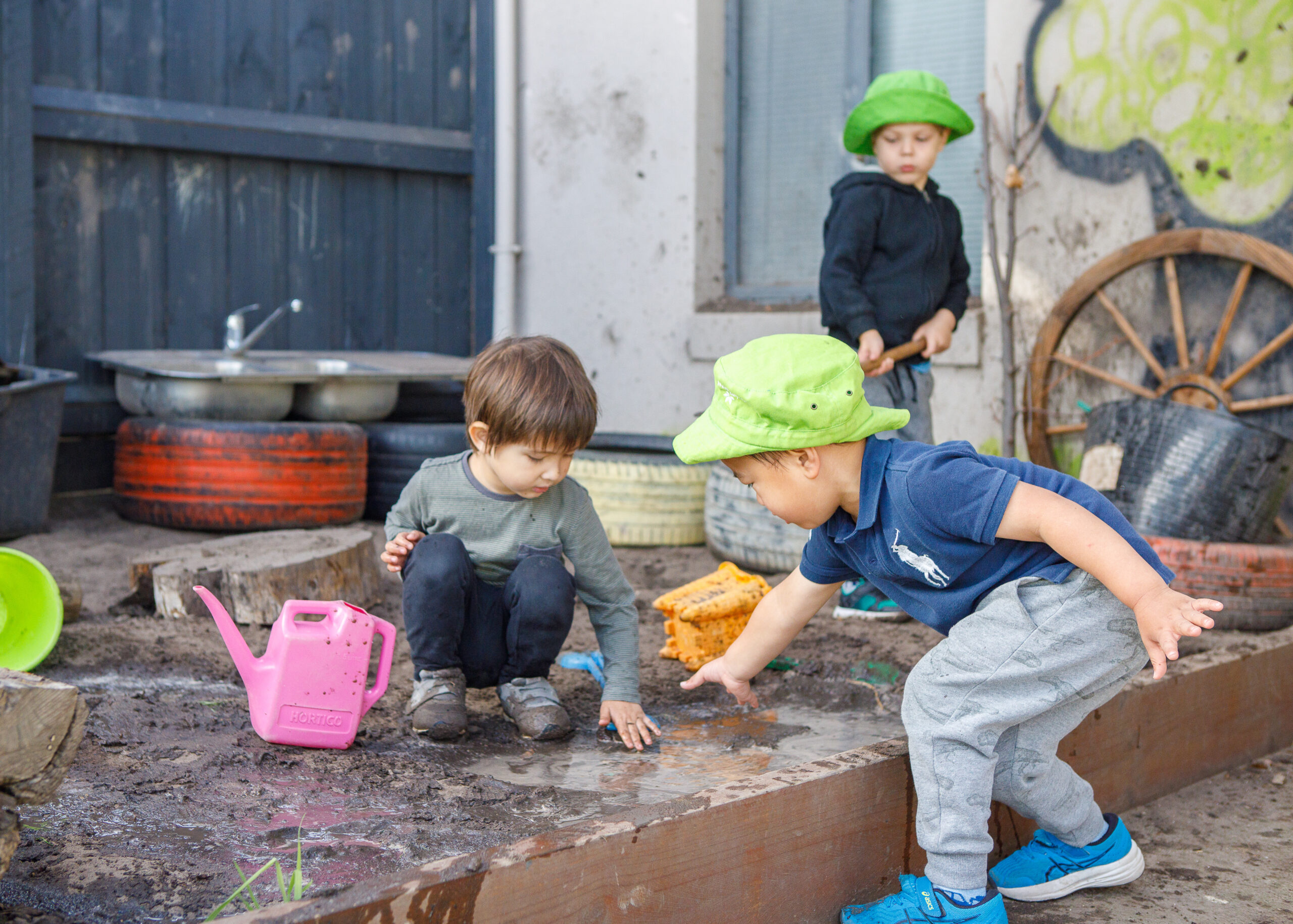
Entertaining children when it’s wet outside, can be difficult for an excitable and energetic child, and our Early Childcare Centres know all too well what it means when the grey clouds roll in.
But don’t fret! With thousands of years of combined early childcare experience, our educators and teachers have seen a fair few wet weather days and were gracious enough to share some of their go-to wet weather activities that have ‘weathered the storm’ even in a childcare centre environment.
Embrace the Rain!
Pull on those gumboots, zip up that raincoat and shake off the umbrella; nothing can be more fun on a wet day than outdoor-based activities!
*Beware of surfaces that become slippery when wet. Playing in water is great, but at times outdoor surfaces can become quite slippery - tile, artificial grass, concrete and dirt can all become slip hazards when wet. *
Chalk Art
Creating chalk art in the rain can be a fun and creative activity to enjoy with your child. While the rain may wash away the art eventually, children love how they can actively see how their artwork moves and changes with the rain.
A quick step-by-step guide on wet weather chalk art:
Gather your supplies:
- Sidewalk chalk: Choose various vibrant colours to make the art more visually appealing.
- An umbrella: This will help keep you and your child dry while working.
- Water-resistant clothing: Wear raincoats and gumboots to stay comfortable in the rain.
Find a suitable location:
Look for a smooth, paved area like a driveway, sidewalk or concrete pad where you can create chalk art.
*Make sure it's safe and away from heavy traffic*
Let their imaginations run wild!
As your child starts to create, the rain will blend with the artwork, creating a fun watercolour effect! Your child can then smudge and blend the colours with their fingers or additional chalk.
Clean up:
Once you’re finished, pack up your chalk, and if necessary, rinse any chalk residue on the ground with water.
Little Chefs
Sensory play is such an essential part of a child’s development, and a common sensory play activity includes... MUD! Creating a designated area for children to engage in mud-based play in the rain can be a fun and educational experience.
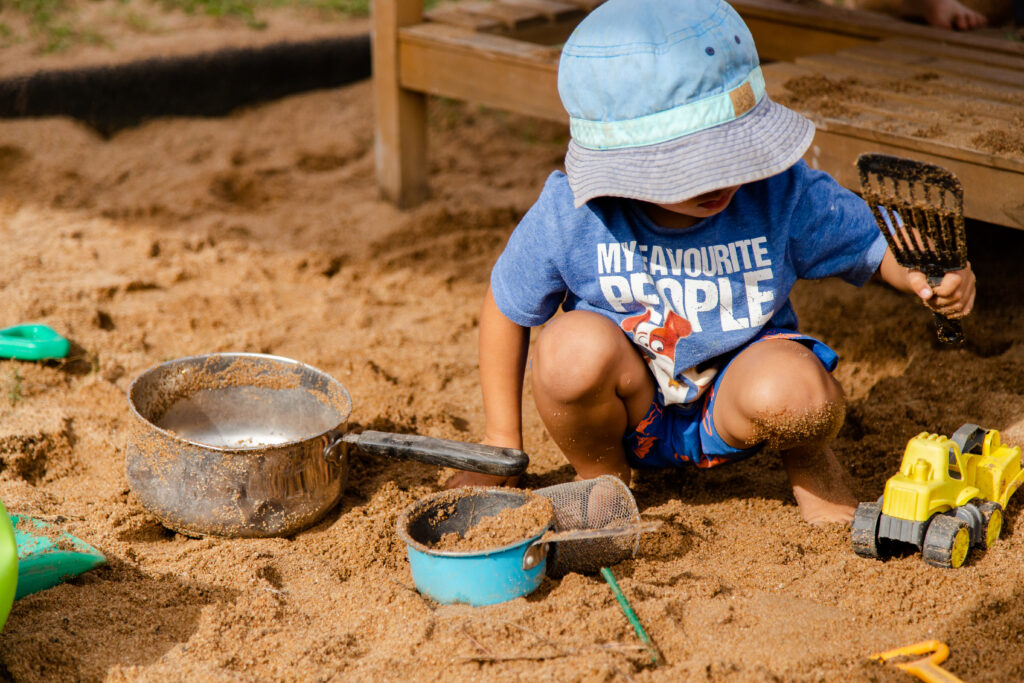
Here’s a quick step-by-step guide on setting up an outdoor environment for making mud pies:
Choose the Location:
Find a suitable spot in your yard or outdoor area with good drainage and you don’t mind getting a bit mucky. Ensure the area is safe and clean before the children get stuck in.
Collecting or creating the ingredients:
Hunt around your outside environment for your materials for this experience, ensuring that the children participating also have the chance to find little ingredients to add, such as rocks, sticks, leaves or bark. You can use or add alternatives to mud, such as sand or other loose materials, which will provide a similar experience.
Provide Tools and Accessories:
Buckets, shovels, bowls, spoons, and other child-friendly tools will enable children to scoop, pour, and shape the mud, enhancing their play experience.
*Please note: Sensory play in children under 3 often includes children placing objects in their mouths. Please ensure the sensory play-based environment and materials you have provided for your young child is age-appropriate, does not present a choking hazard with small pieces, and is non-toxic. *
Educate and Supervise:
Teach children about the joys and benefits of mud play, as well as basic hygiene practices. Providing clear guidelines on acceptable behaviour and continual adult supervision is essential to ensure the safety of this activity.
Boat races
Let your child’s creativity shine with our easy-to-make paper boats, perfect for racing in those puddles or creating your own ‘river’ racecourse!
Choosing the location:
Once you have created your boat with the steps in our guide, it’s time to take them outside and get racing! If you don’t have any puddles or areas where water is naturally running, you could create these with a hose and some piping or bring the fun inside and use straws to blow them across a watery surface!
Remember, these boats are designed for short-term use in wet conditions, so make sure to have fun while being mindful of the environment and cleaning up after the race.
*Young children should never be left unsupervised around standing water, if you are having containers holding water for boat races or water trays etc, never leave children alone with this.
Children can slip and fall and drown in as little as a couple of inches of water. *
Take STEM outside!
A fun STEM-based activity to do outside in the rain with your child is creating a rain gauge.
Let it rain!
Encourage your child to observe and measure the rainfall. After each rain shower, check the rain gauge and record the water level on the paper or plastic sheet. Over time your child can create a rainfall log by recording the rainfall measurements on different days, creating a mini-weather tracking project.
This activity not only engages children in observing and measuring rainfall but also introduces concepts of data collection, measurement, and weather patterns. Remember to prioritise safety while playing in the rain and supervise your child appropriately.
Wet Weather Creature Hunt
If you have a child that loves all things nature, a wet weather day can be just as exciting outdoors.
A range of little creatures thrive when we are usually tucked up inside!
Allow your child to hunt around the gardens and lawn in search of our wet weather friends and create a wet weather create a creature identification list!
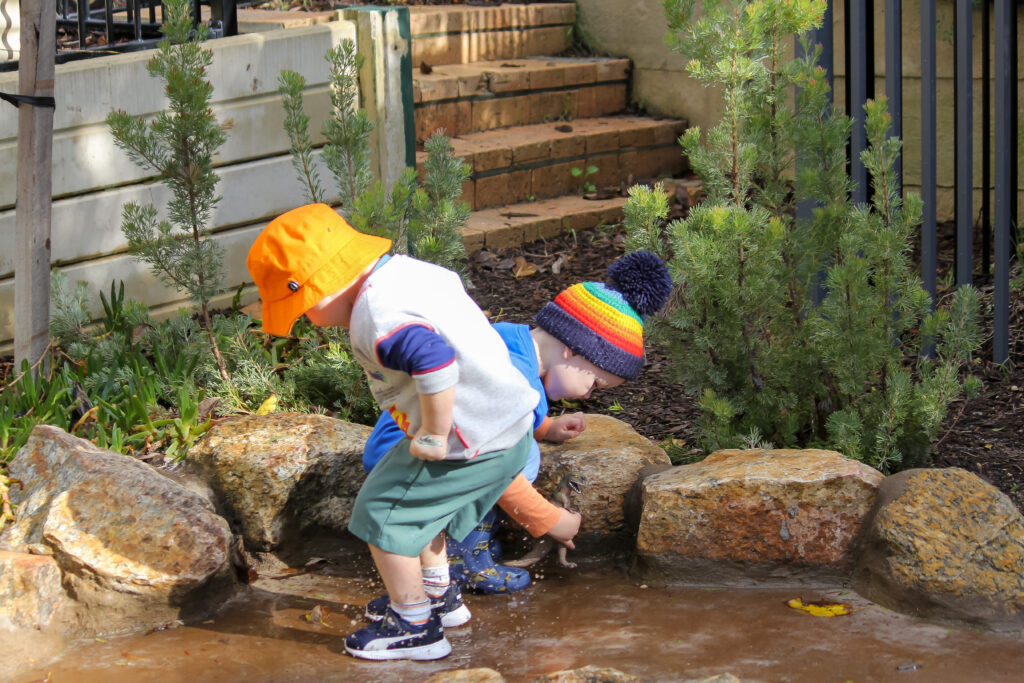
Gather your supplies:
- Pen and waterproof Paper
- Wet weather gear (Gumboots, Raincoat and umbrellas)
- Magnifying glass (Optional)
Find a suitable location and get hunting!
Look for creatures on your decks, concreted areas, gardens, lawns and sandpits! Anywhere where a friendly creature could be hiding! Ensure that your child is always supervised, and we recommend not picking up any creatures but inspect from a safe distance.
If you want to add an additional educational element to this activity, take a pen and paper and write down all the creatures you can identify; discuss why they enjoy being out in the rain and where they may hide once it’s dry.
*Remember to prioritise safety during this activity. If the rain becomes heavy or there is thunder or lightning, it’s best to move indoors to continue the creative fun. *
Keeping Dry Inside!
Safety is the most important thing when deciding an appropriate activity to do with your child, and sometimes, being inside on a wet day is the best option. Here are a few of our favourite activities to keep those stir-crazy children and parents entertained.
Obstacle courses
Creating an obstacle course indoors can be a fun and engaging activity. A well-planned and age-appropriate obstacle course encourages physical activity, coordination, and problem-solving skills. It typically consists of a series of challenges or obstacles that your child needs to navigate through.

Here are some obstacle course ideas to get you started:
Choose a suitable space:
Select an area that provides enough room for the obstacle course. Clear any furniture or objects that may pose a safety hazard.
Gather your materials:
Collect various items around the house or centre that can be used as obstacles. Some ideas include pillows, cushions, hula hoops, tunnels, small cones, softballs, balance beams, crepe paper and ribbons. Ensure that all materials are safe and age-appropriate.
Plan the course and set up the obstacles:
Determine the layout and sequence of the obstacles. Start with simple challenges and gradually increase the difficulty level, considering the incorporation of activities that target different skills, such as crawling, jumping, balancing, and throwing.
Create a clear path for your child to follow, ensuring each challenge is appropriately spaced and safe to navigate.
Set them up for success!
Ensure that all the children know the rules and encourage them throughout the obstacle course, offering them guidance if needed. Provide positive reinforcement and support throughout the activity, celebrating their progress and efforts.
Ensure safety:
Regularly assess the safety of the course and its components. Ensure all obstacles are stable, secure, and free from hazards. Supervise the children participating closely throughout the activity to prevent accidents or injuries.
Remember, the primary goal is to provide your child with a safe and enjoyable experience. Adapt the obstacle course to their abilities, and always prioritise their well-being during the activity.
Make rain sticks
Making rain sticks with a child can be a fun and educational activity. Rain sticks are instruments that produce a soothing sound resembling rainfall when tilted or shaken.
Once the rain stick is complete, encourage your child to tilt or shake it gently and listen to the soothing sound of the “rainfall.”
Remember to supervise and assist your child during the activity, especially when using sharp objects like nails or thumbtacks. Have fun creating and playing with your homemade rain stick!
Sensory play
One of the many sensory play-based indoor activities that you can make on a wet and stormy day could include a sensory bin. A sensory bin is a container filled with various materials that stimulate the senses and provide a hands-on experience. Here’s how you can create a simple sensory bin:
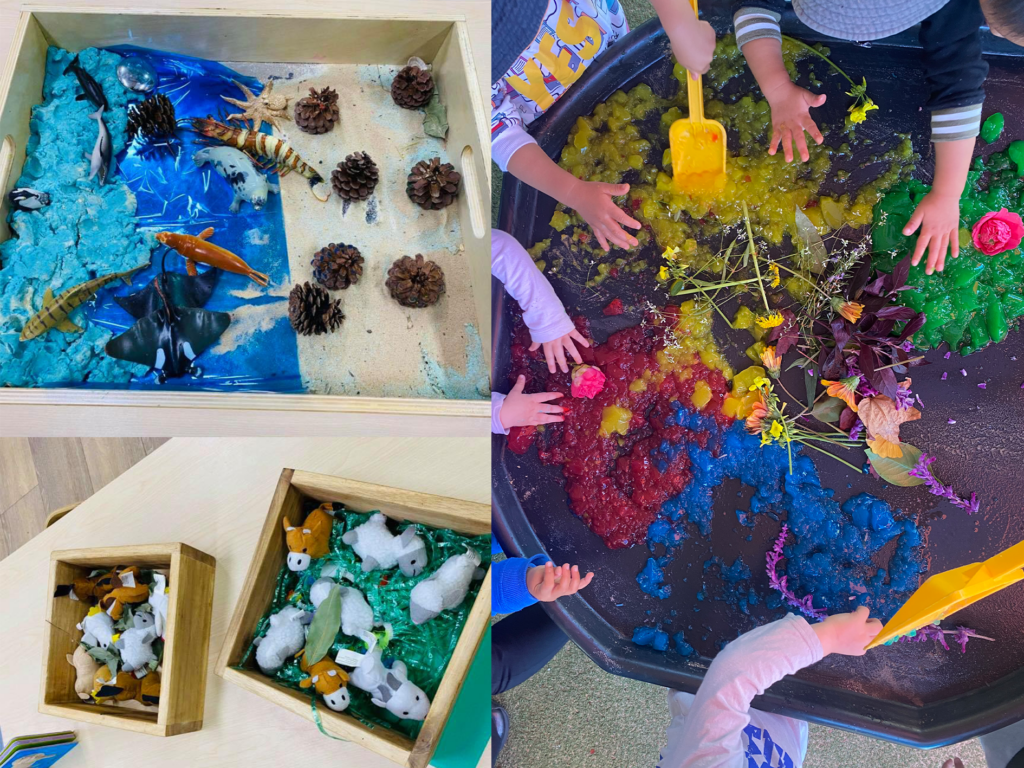
Gather your Supplies:
- Large plastic container or bin
- Sensory materials of your choice (e.g., rice, pasta, sand, dried beans, water beads, shredded paper, or even a combination)
- Small toys, figurines, or objects related to a theme (e.g., farm animals, dinosaurs, cars, or sea creatures)
- Scoops, spoons, and containers for pouring and transferring
Make your sensory bin:
Fill your sensory bin with all the materials, objects, scoops and spoons and invite your child to explore and play with the sensory bin by using their hands to dig, sift, pour, and discover hidden objects.
You can also incorporate language skills by discussing the textures, colours, or objects found in the sensory bin.
Always supervise your child during sensory play and ensure that the materials used are safe and appropriate for their age.
Indoor scavenger hunts
Setting up an indoor scavenger hunt for children under 5 can be a fun and engaging activity that children can participate in as individuals or in a team. This type of activity promotes problem-solving, social skills and cognitive development.

Here are some tips on creating your own indoor scavenger hunt!
Decide on a theme:
Think of a theme that will capture your child’s interest. It could be animals, colours, shapes, or any other topic they enjoy.
Prepare clues with a journey:
Create simple, age-appropriate clues that lead the children from one location to another. Use pictures or easy-to-understand words.
Hide objects, pictures or clues:
Depending on your child’s age, you can create your clues as a standard paper riddle form or, for younger children, you may want to consider hiding objects or pictures related to the theme around the house. For example, if the theme is animals, hide small animal toys or pictures of animals. Making sure they are accessible and safe for young children.
Set the boundaries and explain the rules:
Establish the boundaries of the scavenger hunt to ensure your child or children remain in a safe space, ensuring the rules are explained to avoid confusion, fights or frustration.
Get hunting!
Hand out the first clue or show it to the children and let them start searching! Once they find the item or next clue, celebrate their success.
Celebrate the Completion:
Once all the objects or pictures have been found, celebrate the children’s achievements. You can have a small prize or reward for their efforts.
Remember to prioritise safety during the scavenger hunt. Remove any hazards or fragile items from the designated area, and supervise the children closely to ensure a fun and safe experience.
Dramatic play
Dramatic play, also known as pretend play or imaginative play, is a form of play where children use their imagination to take on different roles and act out various scenarios. It allows them to explore the world around them, develop their social skills, and enhance their cognitive, emotional development and is a regular activity at our centres. Children often engage in make-believe activities during dramatic play, create imaginary situations, and imitate real-life experiences. Dramatic play is a great indoor activity for children to explore on a rainy day and can keep them entertained for hours!
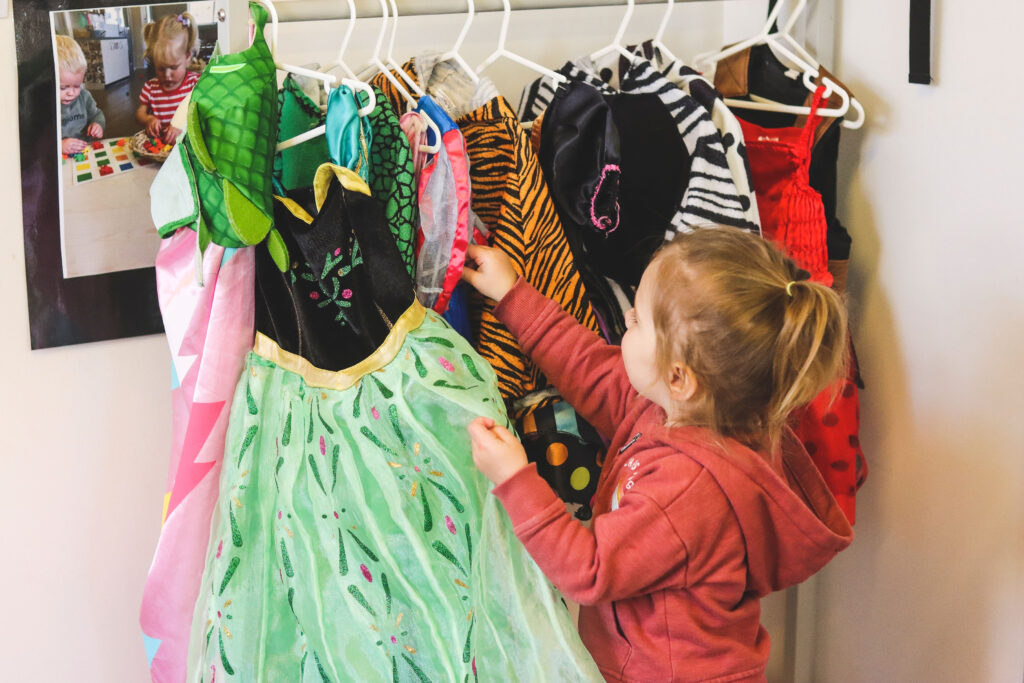
Here is a list of dramatic play ideas:
Kitchen or Restaurant:
Set up a play kitchen or pretend restaurant where children can cook, serve food, and play the roles of chefs, waiters, and customers.
Doctor's Office:
Provide pretend medical tools and outfits for children to take turns being doctors, nurses, and patients. They can give check-ups, administer pretend shots, and care for their patients.
Grocery Store:
Arrange play food items, shopping carts, and cash registers for children to take on the roles of shoppers, cashiers, and storekeepers. They can pretend to buy and sell groceries.
Firefighters:
Set up a pretend fire station with toy fire hats, hoses, and a fire truck. Children can take turns being firefighters, rescuing stuffed animals or dolls from imaginary fires.
Construction Site:
Provide toy tools, hard hats, and construction vests for children to pretend they are builders or construction workers. They can build structures using blocks or cardboard boxes.
Animal Hospital:
Set up a veterinary clinic with stuffed animals or toy pets. Children can pretend to be veterinarians, examining and treating the animals.
Post Office:
Create a mini post office with envelopes, stamps, and mailboxes. Children can take turns being postal workers, delivering letters and packages.
Space Explorers:
Use cardboard boxes to create spaceships or astronaut costumes. Children can embark on an imaginary space journey, exploring the stars and planets.
Tea Party:
Arrange a tea set with cups, saucers, and pretend food. Children can invite their friends or stuffed animals for a delightful tea party.
Superheroes:
Provide capes, masks, and superhero accessories. Children can pretend to have superpowers and engage in heroic adventures.
Remember, the possibilities for dramatic play are endless. Encourage children to use their imagination and provide props and materials that enhance their play experience.

